ARQ Wealth Advisors – Q1 2024 Commentary: Higher for Longer?
Authored by Richard Siegel, CFP® and Justin Rivera, CFA, CFP®
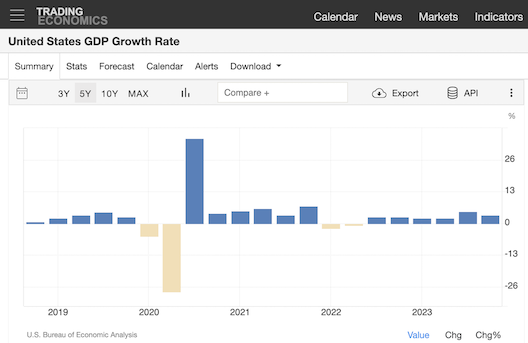
Well, surprise, surprise…. just when everyone thought that the Fed jacking rates from 0% to 5.5% in the fastest tightening cycle in recorded history would crash the economy and the stock market, equity markets have turned in back-to-back strong quarters and the U.S. economy seems to be on solid footing. Let’s not get ahead of ourselves; there has been pain along the way. After all, the economy did print two consecutive quarters of negative GDP during the first half of 2022 and there was a 25% drop in stock prices. Normally, that would be considered a recession, but it wasn’t “officially,” and both stocks and bonds experienced a very nasty and prolonged bear market. In fact, it took the S&P 500 index approximately 2 years to reclaim the all-time high level it hit during the first few days of 2022. As things stand today, stocks are back to their high-water mark and the economy is in decent shape, but there are still plenty of reasons to be tentative. By no means is there an “all clear” signal with today’s backdrop. Inflation has come down quite a bit from its nose bleed levels, but it is still a pervasive issue for consumers’ everyday lives. There is ample geopolitical risk, and we have a very contentious Presidential election coming up.
 Investors must not fall into the recency bias trap. When markets are trending lower on fear and uncertainty, it is easy to feel helpless and assume it’s going to always be that way. Same goes for the alternative; when markets are shooting up on optimism and momentum, it’s human nature to fall into the trap of getting euphoric at the exact worst time. Discipline is key; adding to risk exposure into weakness and cheaper valuations and trimming into strength and inflated valuations is our formula for solid and consistent returns over the long run.
Investors must not fall into the recency bias trap. When markets are trending lower on fear and uncertainty, it is easy to feel helpless and assume it’s going to always be that way. Same goes for the alternative; when markets are shooting up on optimism and momentum, it’s human nature to fall into the trap of getting euphoric at the exact worst time. Discipline is key; adding to risk exposure into weakness and cheaper valuations and trimming into strength and inflated valuations is our formula for solid and consistent returns over the long run.
Economic Overview
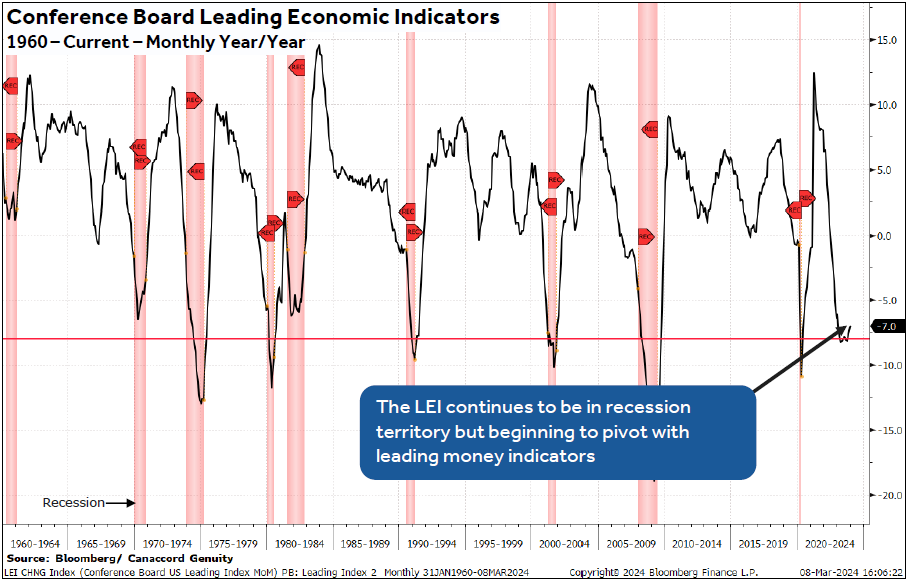 The phrase, “this time is different” truly seems like a bunch of swear words when analyzing the economy and the stock market. We won’t make the mistake of uttering that phrase, but it would be wise to at least consider that traditional economic analysis has been less accurate than historical precedent, given the extreme circumstances of the last few years. The vast majority of economists spent 2023 predicting a recession, a view so broadly accepted that it felt as though the entire investing community treated it as a foregone conclusion. Now, the calls for a recession have gone quiet, but we believe there are still reasons to be cautiously optimistic about the path forward for the economy.
The phrase, “this time is different” truly seems like a bunch of swear words when analyzing the economy and the stock market. We won’t make the mistake of uttering that phrase, but it would be wise to at least consider that traditional economic analysis has been less accurate than historical precedent, given the extreme circumstances of the last few years. The vast majority of economists spent 2023 predicting a recession, a view so broadly accepted that it felt as though the entire investing community treated it as a foregone conclusion. Now, the calls for a recession have gone quiet, but we believe there are still reasons to be cautiously optimistic about the path forward for the economy.
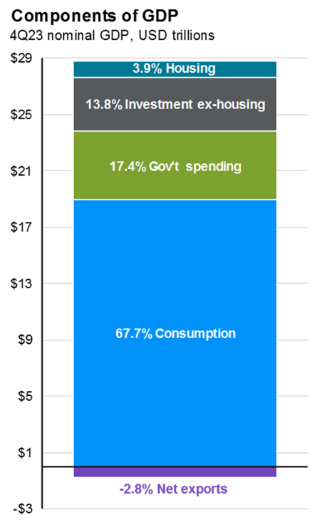 It is not certain that we have completely sidestepped a recession yet, but most signs point to the U.S. avoiding one in the near term. How can this be? We have an inverted yield curve, we’ve never seen the Leading Economic Indicators (LEI) index this suppressed and it not result in a recession, we saw housing (a key sector for the US economy) experience nine consecutive quarters of negative contribution to GDP, and the list goes on. Even so, it seems more and more possible by the day that old-school recession indicators simply did not work this time around. With such a strong job market, prices stabilizing, and the U.S. consumer continuing to spend, it sure doesn’t look like there is a recession out there. All that being said, The Conference Board “expects annualized U.S. GDP growth to slow over the Q2 to Q3 2024 period, as rising consumer debt and elevated interest rates weigh on consumer spending.” Since consumption accounts for approximately two thirds of GDP, this would suggest that the lifeboat is losing some air.
It is not certain that we have completely sidestepped a recession yet, but most signs point to the U.S. avoiding one in the near term. How can this be? We have an inverted yield curve, we’ve never seen the Leading Economic Indicators (LEI) index this suppressed and it not result in a recession, we saw housing (a key sector for the US economy) experience nine consecutive quarters of negative contribution to GDP, and the list goes on. Even so, it seems more and more possible by the day that old-school recession indicators simply did not work this time around. With such a strong job market, prices stabilizing, and the U.S. consumer continuing to spend, it sure doesn’t look like there is a recession out there. All that being said, The Conference Board “expects annualized U.S. GDP growth to slow over the Q2 to Q3 2024 period, as rising consumer debt and elevated interest rates weigh on consumer spending.” Since consumption accounts for approximately two thirds of GDP, this would suggest that the lifeboat is losing some air.
 Some are probably wondering, “but what does all this mean for rate cuts?” Well, for the first time in a long time, the Fed and market expectations are in alignment: three rate cuts this year. If you take what financial pundits are saying as law, whether or not the rate cuts come to fruition will materially drive stock market performance this year. It is our contention that the timing and number of rates cuts along with the stock market’s reaction to these policy decisions remain uncertain. On one hand it makes sense to predict strong returns given three cuts, but what if they come with a rapidly deteriorating economy? On the other hand, only getting one cut may seem predictive of negative returns, but what if that comes with an extremely healthy economy? Calculating the net effect of rate cuts with changes in the macroeconomic landscape can be a futile effort at best, so we will let time be our guide and stay agile along the way.
Some are probably wondering, “but what does all this mean for rate cuts?” Well, for the first time in a long time, the Fed and market expectations are in alignment: three rate cuts this year. If you take what financial pundits are saying as law, whether or not the rate cuts come to fruition will materially drive stock market performance this year. It is our contention that the timing and number of rates cuts along with the stock market’s reaction to these policy decisions remain uncertain. On one hand it makes sense to predict strong returns given three cuts, but what if they come with a rapidly deteriorating economy? On the other hand, only getting one cut may seem predictive of negative returns, but what if that comes with an extremely healthy economy? Calculating the net effect of rate cuts with changes in the macroeconomic landscape can be a futile effort at best, so we will let time be our guide and stay agile along the way.
Equity Markets Overview
 The first three months of 2024 saw a strong continuation of returns from the October – December 2023 epic market rebound. In other words, the last 6 months of market performance have finally wiped out the 2022-2023 bear market, and now most equity markets are sitting at or close to new all-time highs. On the same note, some pockets of the market are priced at fairly lofty valuations relative to historical averages. Today’s forward price-to-earnings ratio on the S&P 500 Index, for example, falls into the top 15% most expensive levels of the last 30 years. Other areas of the global equity markets present a much better opportunity from both an expected return and an implied risk standpoint.
The first three months of 2024 saw a strong continuation of returns from the October – December 2023 epic market rebound. In other words, the last 6 months of market performance have finally wiped out the 2022-2023 bear market, and now most equity markets are sitting at or close to new all-time highs. On the same note, some pockets of the market are priced at fairly lofty valuations relative to historical averages. Today’s forward price-to-earnings ratio on the S&P 500 Index, for example, falls into the top 15% most expensive levels of the last 30 years. Other areas of the global equity markets present a much better opportunity from both an expected return and an implied risk standpoint.
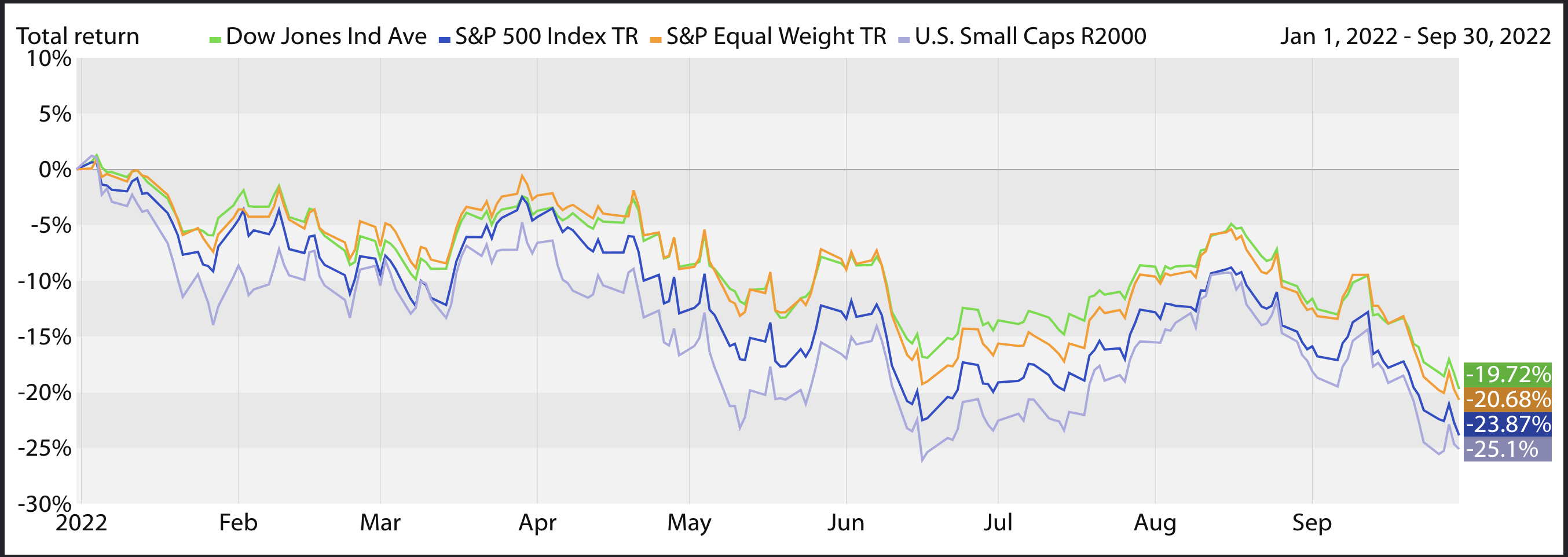
We’ve been pounding the table on the small basket of mega-cap tech stocks that have driven most of the S&P’s performance over the past few years and the risk that this presents. Cracks are starting to form in the “Magnificent 7,” so perhaps we should call it the “Fab 5”? Tesla and Apple have decided to sit out the last three months, but the good news is that the market is starting to broaden out. There is safety in numbers; putting too many eggs in a few investment baskets results in tremendous stock specific risk. We continue to own these tech stocks within our strategies, albeit at a lower percentage concentration than the S&P.
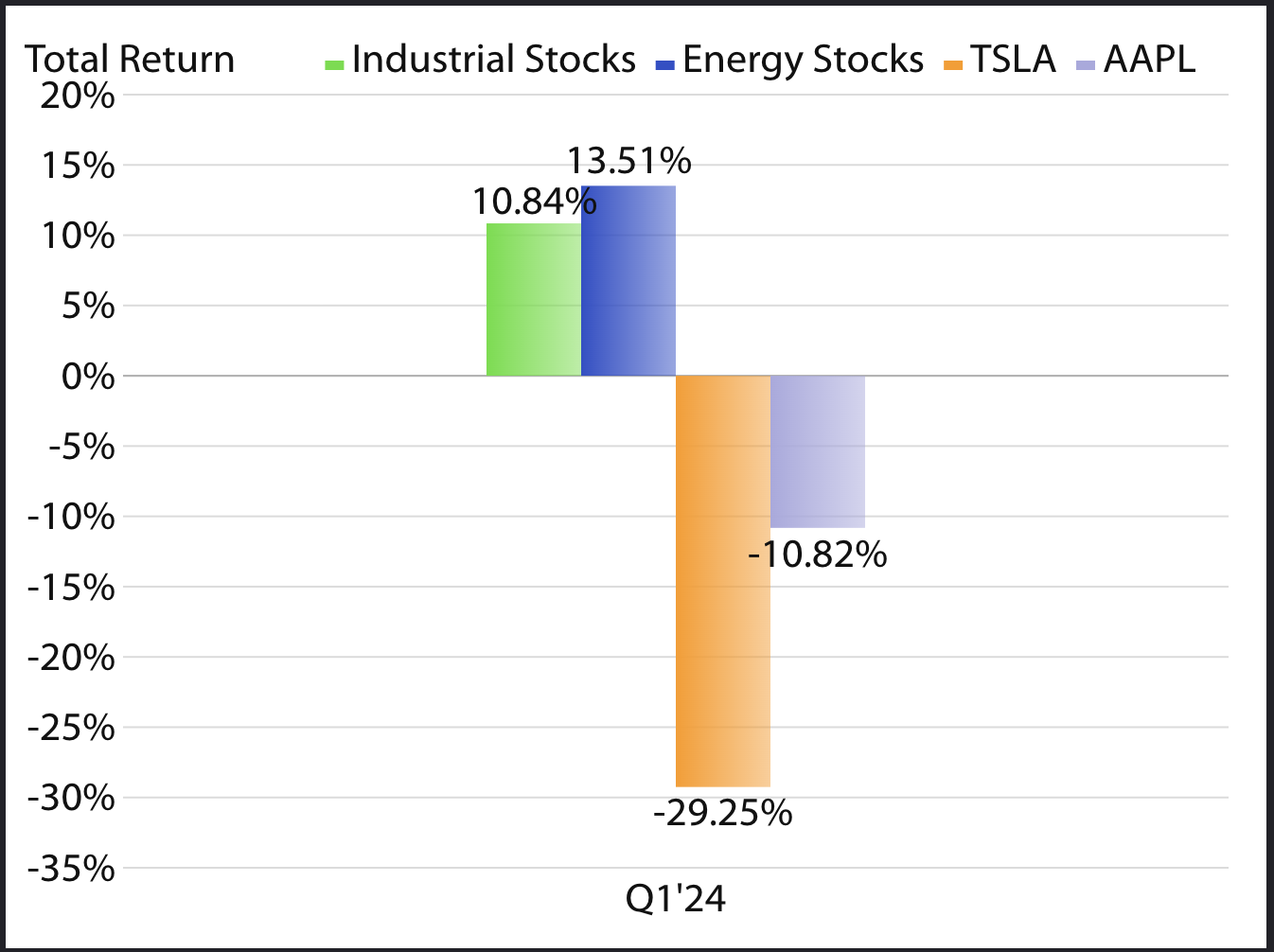 Although current market valuations are not as extreme as the tech bubble peak of 2000, it is our contention that today’s backdrop could present a generational opportunity in which the under-owned and unloved areas of the global equity markets can significantly outperform the aforementioned U.S mega-caps, similar to the “lost decade” of the S&P 500 (2000-2009).
Although current market valuations are not as extreme as the tech bubble peak of 2000, it is our contention that today’s backdrop could present a generational opportunity in which the under-owned and unloved areas of the global equity markets can significantly outperform the aforementioned U.S mega-caps, similar to the “lost decade” of the S&P 500 (2000-2009).

Bond Market Overview
 Unlike the stock market’s return in Q1, bonds booked small losses over the past few months. As economic data has come in stronger than expected and the forecasted pace and level of the Fed’s rate cuts has been meaningfully lowered, bond yields have moved about halfway back up to the levels of last October. The good news is that returns have been relatively flat due to the much higher yields being paid on fixed income. Moreover, our bond/alternative holdings within client portfolios were able to turn in a small gain of 0.59% versus the -0.78% return of the U.S. Aggregate Bond Index for the quarter. This was due to our positioning in lower duration bonds, low exposure to U.S. Treasury bonds, and substantial positions in non-traditional, alternative investments that we have been successfully using as bond proxies.
Unlike the stock market’s return in Q1, bonds booked small losses over the past few months. As economic data has come in stronger than expected and the forecasted pace and level of the Fed’s rate cuts has been meaningfully lowered, bond yields have moved about halfway back up to the levels of last October. The good news is that returns have been relatively flat due to the much higher yields being paid on fixed income. Moreover, our bond/alternative holdings within client portfolios were able to turn in a small gain of 0.59% versus the -0.78% return of the U.S. Aggregate Bond Index for the quarter. This was due to our positioning in lower duration bonds, low exposure to U.S. Treasury bonds, and substantial positions in non-traditional, alternative investments that we have been successfully using as bond proxies.
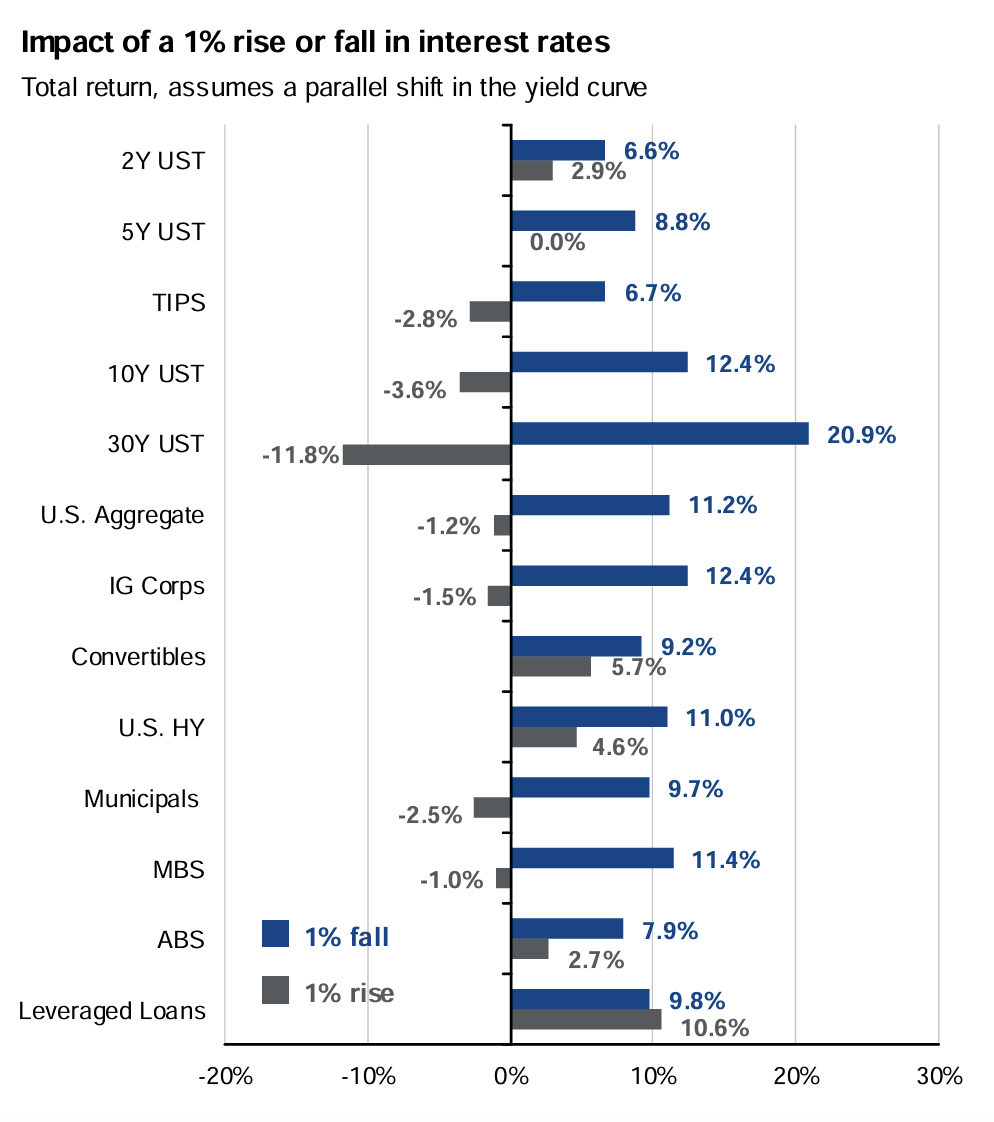 On a go-forward basis, we are quite constructive on bonds. Yields are attractive in the 5-7% range and although cash is paying approximately 5%, it would be shortsighted to assume that CDs and money markets will be at current levels for long. In fact, the Fed is estimating its target funds rate to be in the 3% range within the next 12-18 months. The “higher for longer” theme has come to fruition as the need to dramatically lower rates has thus far been thwarted due to a strong job market and lack of an economic contraction. That said, if the Fed does leave rates at the current level for the long term, an economic “hard landing” will likely be the result. How long can the U.S. government service its debt at current rates? How long will homebuyers be able to avoid locking in a 7%+ mortgage rate?
On a go-forward basis, we are quite constructive on bonds. Yields are attractive in the 5-7% range and although cash is paying approximately 5%, it would be shortsighted to assume that CDs and money markets will be at current levels for long. In fact, the Fed is estimating its target funds rate to be in the 3% range within the next 12-18 months. The “higher for longer” theme has come to fruition as the need to dramatically lower rates has thus far been thwarted due to a strong job market and lack of an economic contraction. That said, if the Fed does leave rates at the current level for the long term, an economic “hard landing” will likely be the result. How long can the U.S. government service its debt at current rates? How long will homebuyers be able to avoid locking in a 7%+ mortgage rate?
It is also worth noting that presently, there is an asymmetric risk/return trade-off among most bond asset classes. This is the exact opposite of the trade-off that investors were presented with during the collapse of interest rates in 2020, at the height of the Covid turmoil. Essentially, bond returns have more upside than they do downside based on movements in interest rates along the yield curve, assuming any increases from current levels remain relatively tame.
The next several months will most likely bring higher levels of volatility as Jerome Powell and Co. get closer to staying put or cutting the all-important Fed Funds Rate. Their policy decisions will be based primarily on upcoming employment and inflation data, which coincide with their dual mandate. After some suspect policy decisions in 2022, they have redeemed themselves by threading the needle; full employment and falling inflation. Keep in mind… the Fed is a non-partisan, independent government agency, so affecting the outcome of the next Presidential election with bold changes to monetary policy is most likely not going to happen.


